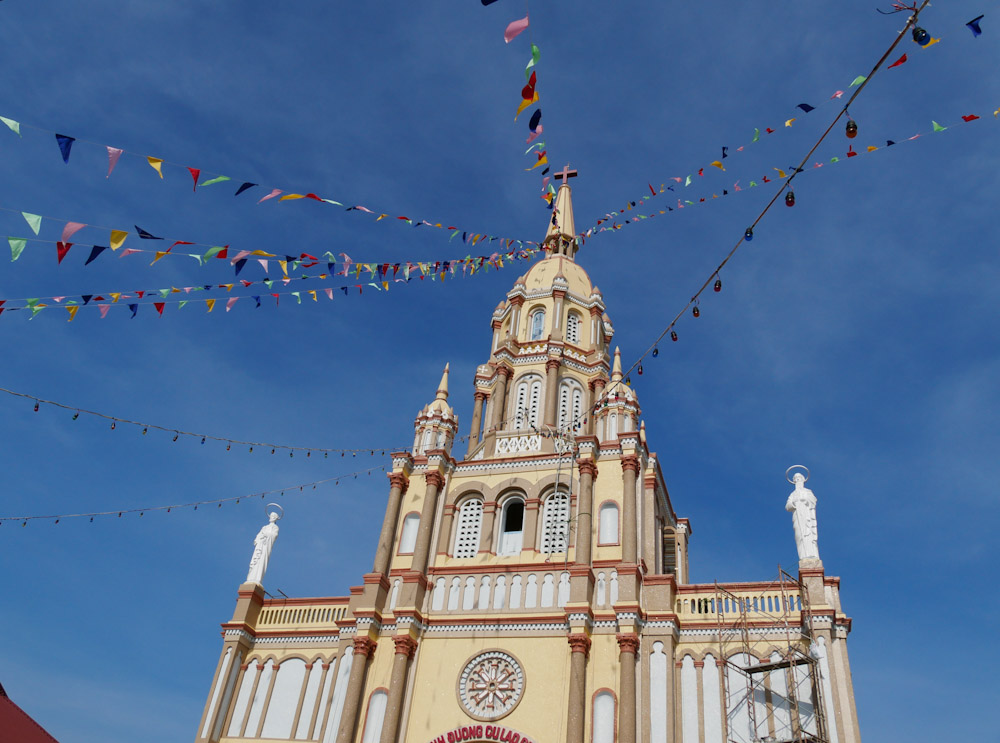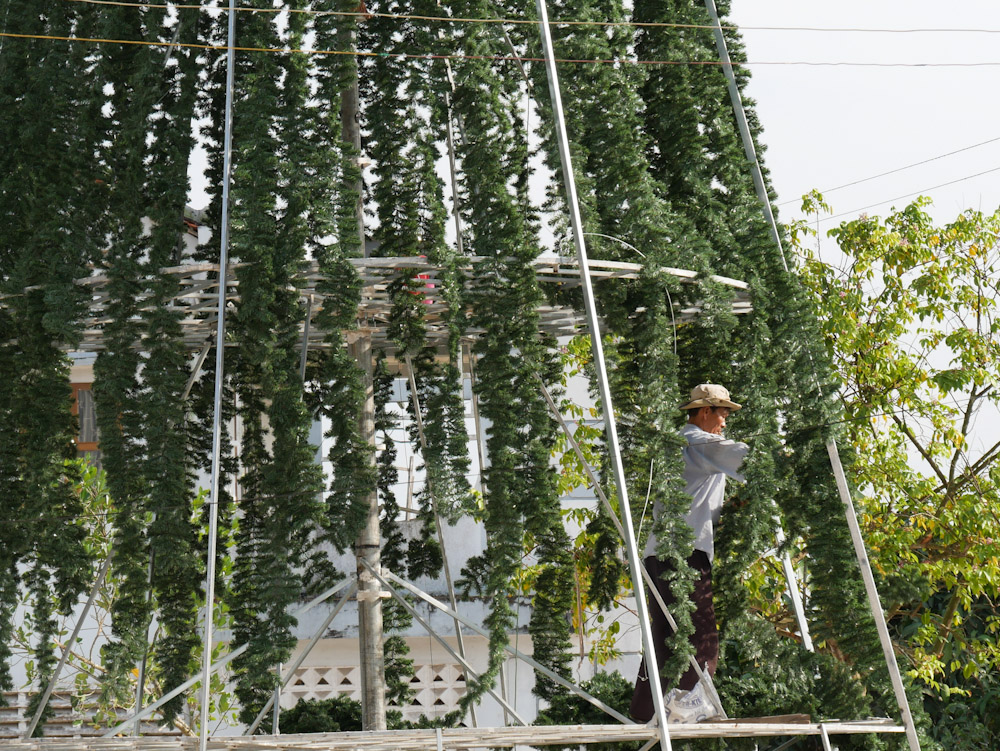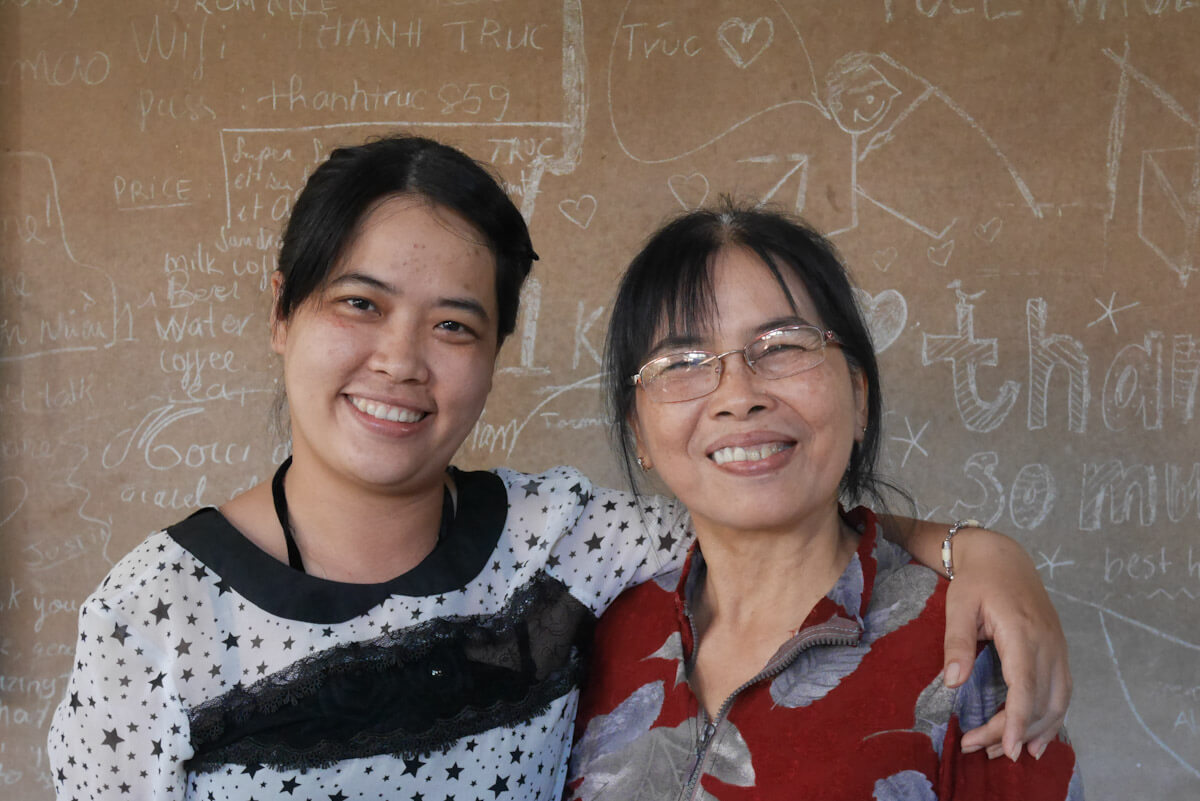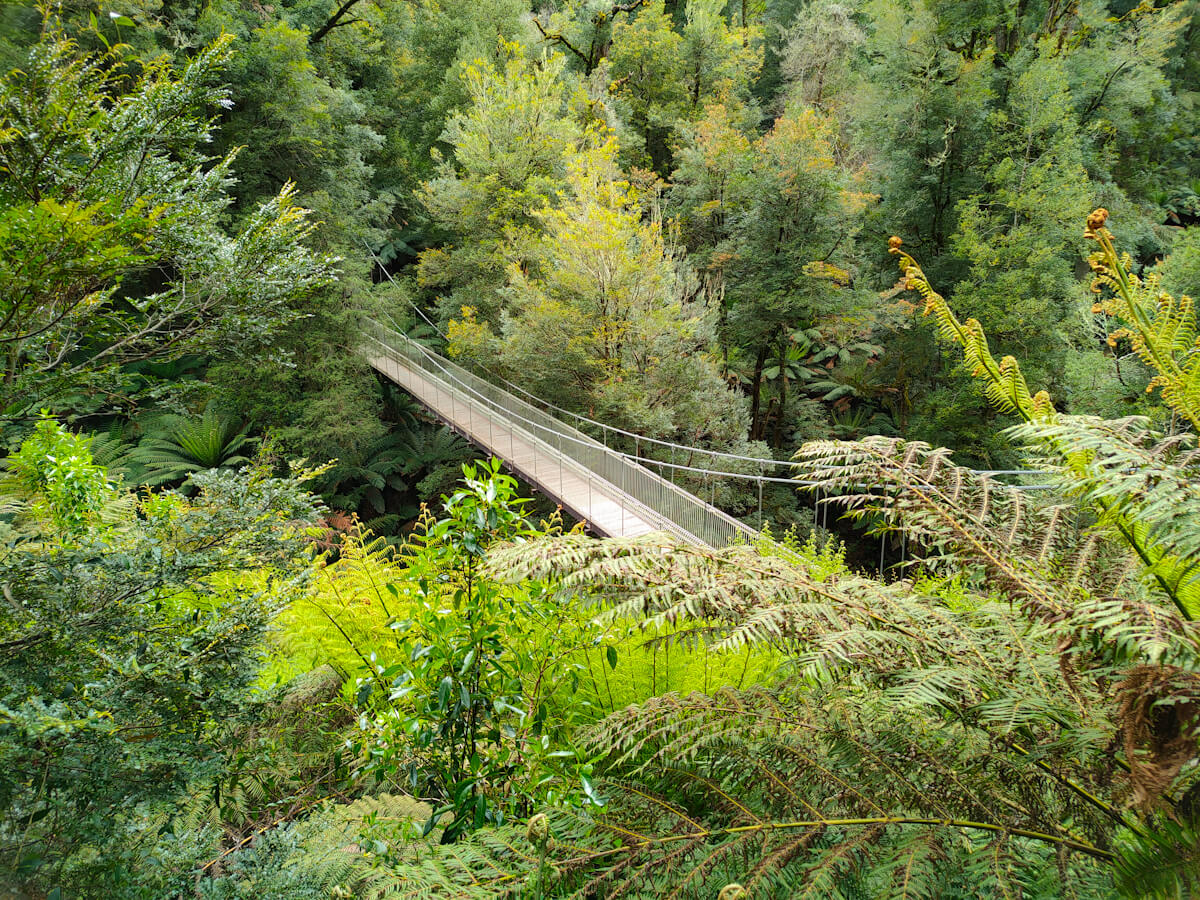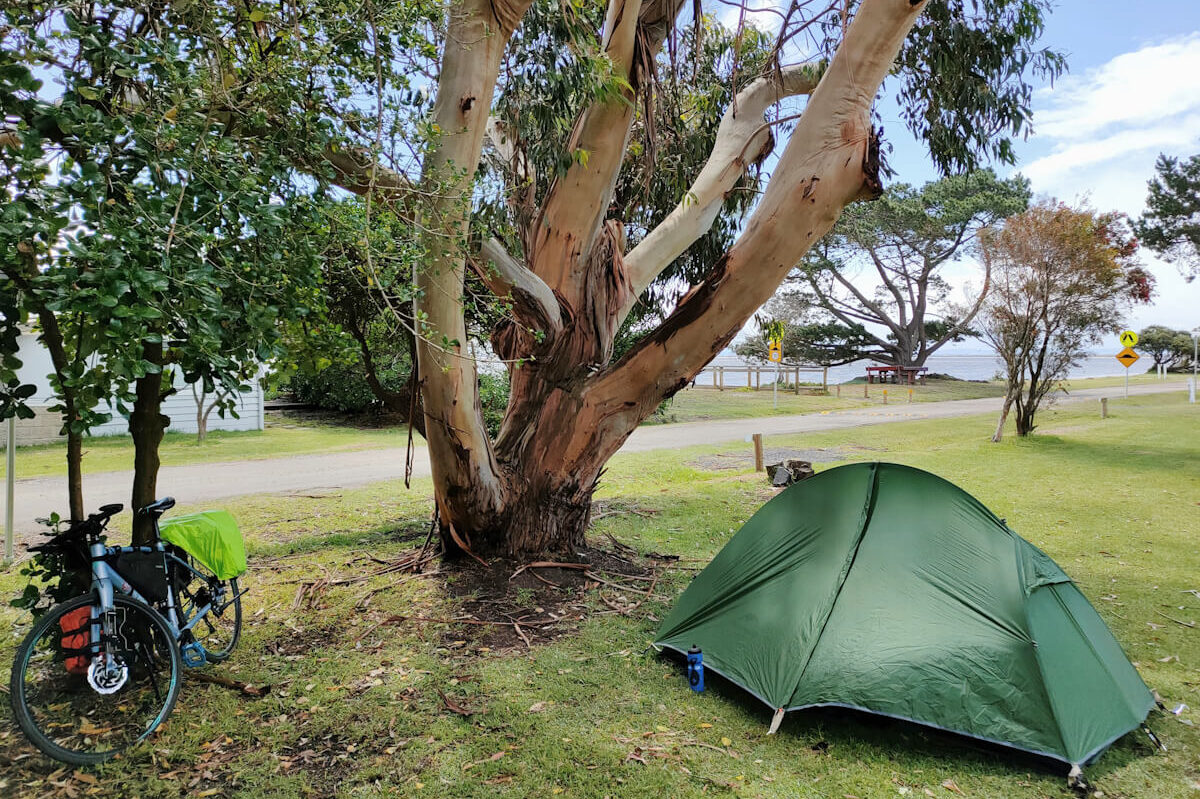Guide to Gieng Island, Ap An Phu
Sleepy and attractive Gieng Island is a wonderful destination in its own right, or a worthy part of a longer cycling tour.
This destination is also the third overnight stay of my independent Mekong Delta cycling tour. (Or the fourth if you split day three into two parts).
Thanks to Jackson for the photo at the top of this post.
The island nobody’s heard of
OK, I’ll admit it; there is no such place as Gieng Island.
Well, there is an almond-shaped land mass that sits in the middle of the Tien River, but it doesn’t have a formal name.
Perhaps that’s because it is broken up into four communes, one being Binh Phuoc Xuan, where the excellent Happy Homestay is located.
To be honest, nobody seems all that fussed. It’s that kind of place. They’re probably far too busy tending to their wonderful gardens, or picking mangoes.
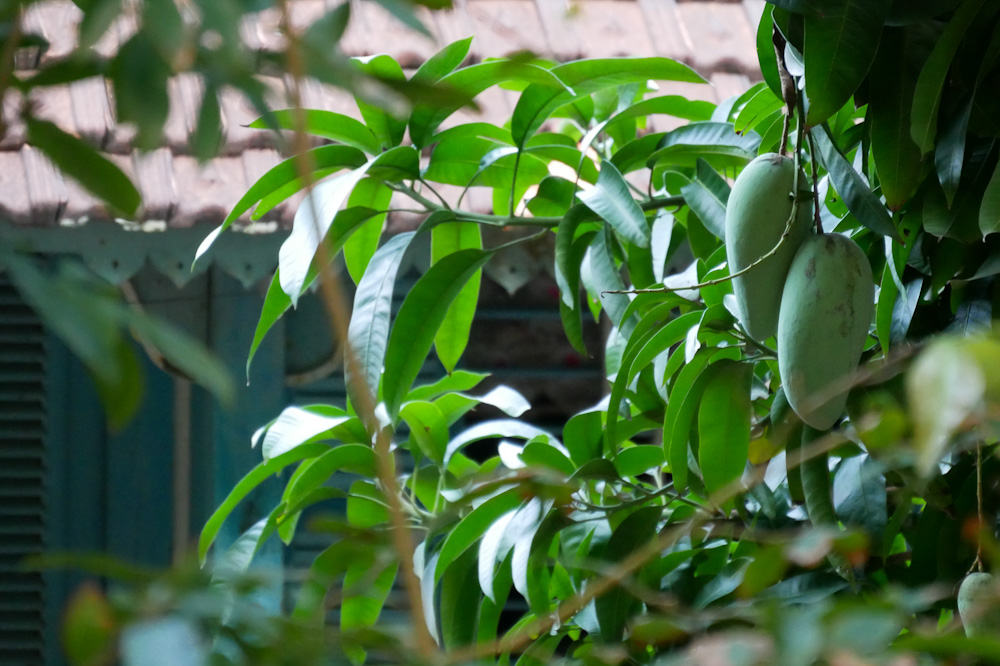
Map
This map also shows the route from Chau Doc to Gieng Island.
Arriving on the island
Most people will arrive on Gieng Island from the scrappy town of My Luong. The difference is immense: this little island really feels like a world away.
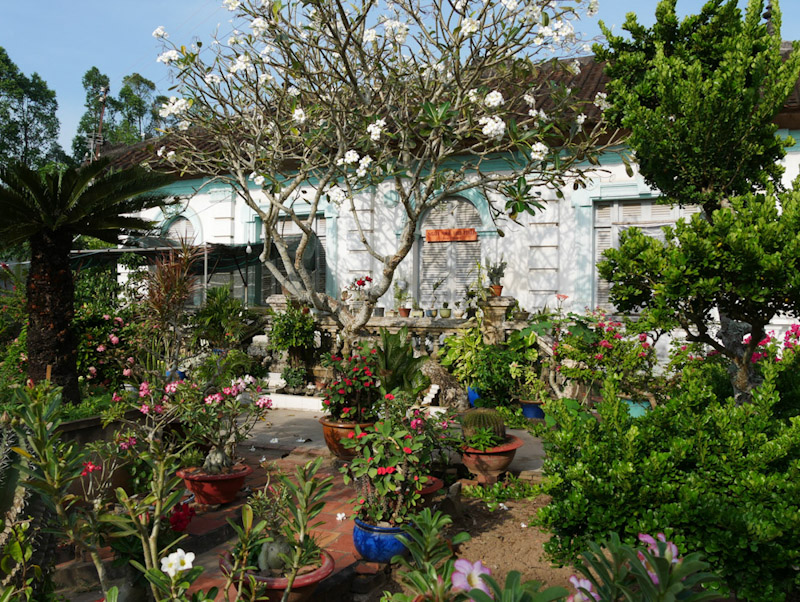
If you are biking or cycling, the most attractive way from the My Luong bridge to the island’s only tourist-friendly homestay is also the most direct.
Rows of picturesque homes and gardens line the main waterfront road, including some that are obviously historic. Locals are obviously very proud of where they live.
As tired as I am at the end of a long day’s ride, I couldn’t help but take it slow to look around.
Adding to the charm is the sight of hundreds of trees dripping with green mangos – a key production source for the island.
Accommodation
For now the ONLY place on the island to stay, Happy homestay has performed the world a service by opening up such a lovely area to visitors.
It’s really worth coming here – in fact you might find it hard to leave.
Happy Homestay is a proper, family-run homestay, with two simple guest rooms. There’s a shared bathroom, also very clean, and you’ll be encouraged to lay back in a hammock in front of a fan.
It’s a super cheerful family too, and I’m made to feel right at home by the charismatic Truc (pronounced ‘chook’) and her adorable mum.
Truc, who speaks excellent English, runs bookings through the major usual sites (AirBnb, booking.com etc) but I was fine with just calling ahead.
Rooms are around 200, 000 VND with occasional special deals through the booking sites.
The one drawback to staying at Happy Homestay is mosquitos. Unfortunately, with so much nearby land dedicated to mango plantation it is hard to avoid.
All I can say is bring plenty of insect repellent and be sure to tuck in your mosquito net carefully at night.
Eating
Definitely let Truc’s mum cook dinner for you – for around $5 USD, it’s a veritable feast.
Enjoy a relaxed breakfast at the homestay or head out to the terrific local market. It’s only about two minutes’ walk away, and you can by a fresh banh my or local coffee.
Getting there
Gieng Island is relatively easy to get to by long distance sleeper bus from Ho Chi Minh City.
Catching one of the comfortable long distance sleeper coaches from the Eastern bus station (Ben Xe Mien Dong), you’ll need to get off at the town of My Luong.
From My Luong, motorbike taxis will take you to the homestay in around ten to fifteen minutes. All up, the journey should take four to five hours.
I recommend contacting the Happy Homestay in advance for information on getting to Gieng Island.
Things to do
I stayed an extra night on Gieng Island, and with the aid of my trusty bicycle thoroughly enjoyed exploring the back roads, markets and charming buildings.
If you’re interested in boat tours or other activities its worth contacting the Happy Homestay beforehand to see what Truc can organise for you.
The two most notable sights on the island are a truly magnificent pagoda and and an historic Catholic church.
1. Take a stroll
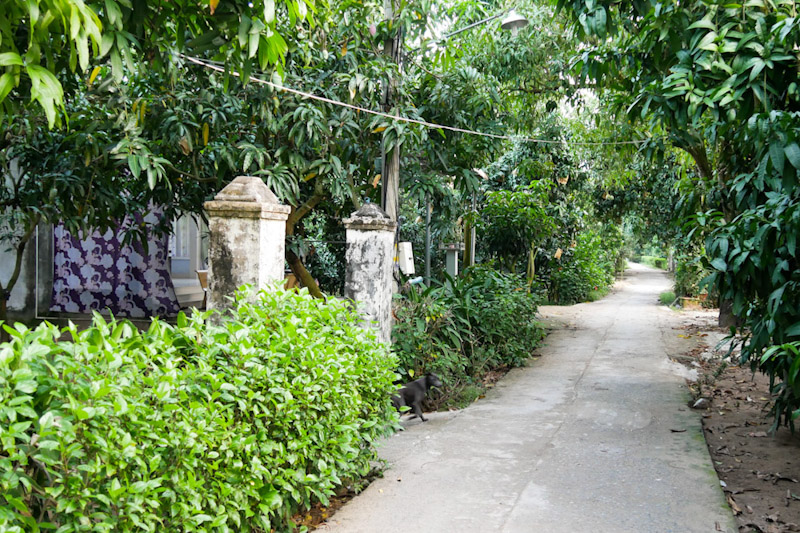
Check out the walking or ‘slow cycling’ route marked on my map for a relaxing stroll.
From a starting point close to the Phuoc Thanh pagoda, it’s possible to walk for around 20 minutes along a pleasant country lane.
It’s the ideal way to soak up the rural yet genteel atmosphere of this hidden gem of the Delta. Honestly I loved this place. It had a special magic that is hard to sum up in words.
2. Phuoc Thanh pagoda
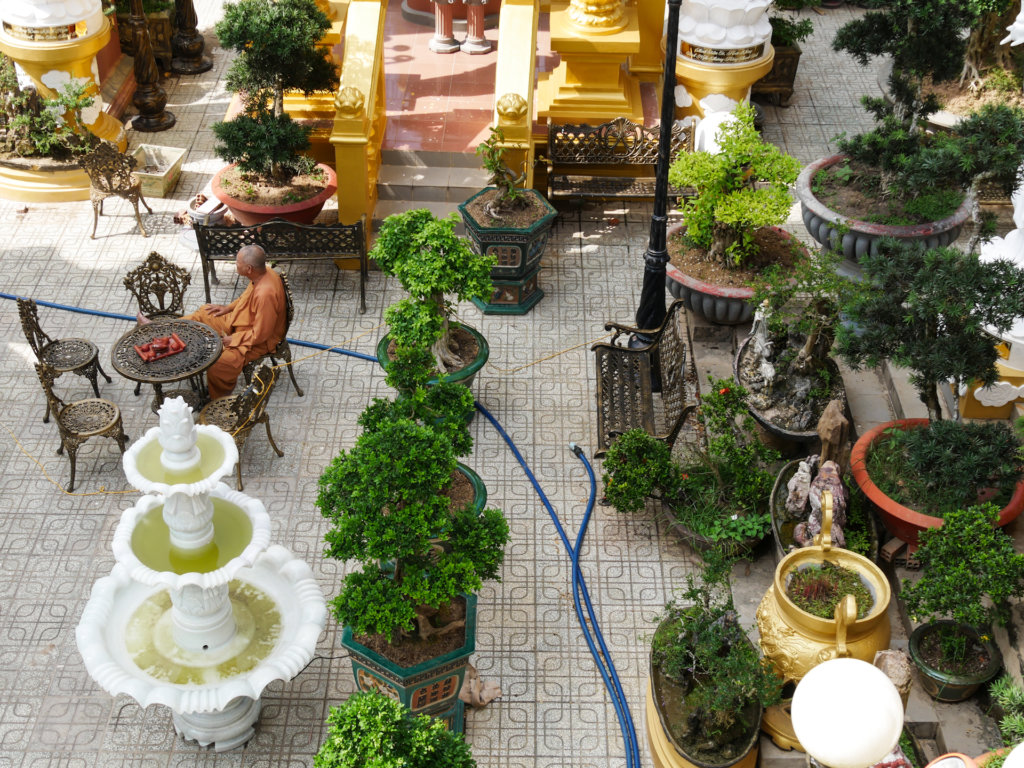
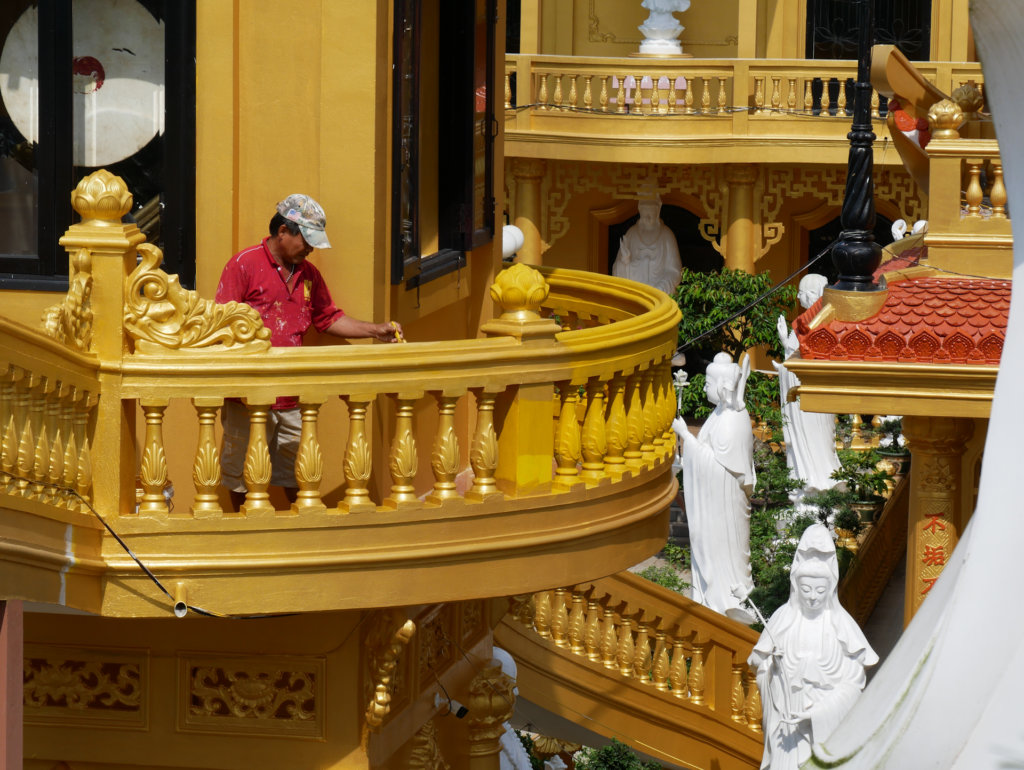
There is nothing understated about this pagoda, which is really quite magnificent.
A riot of golden towers and statues, all dominated by an enormous white buddha. It leans towards kitsch but manages a stately charm.
Two high walkways border a courtyard, so you can see everything from above, before entering the interior and back out through the courtyard.
At the time of my visit workers were busily painting the temple gold, all under the eagle eye of a brown-robed monk.
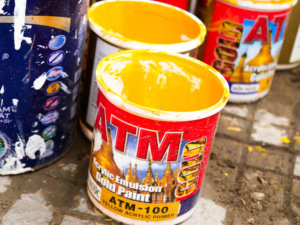
Looking at the enormity of the job I couldn’t help but take a quick snap of the tiny paint tins stacked about the yard.
You have to wonder why temple paint isn’t sold in larger receptacles.
A large two storey cafe is across the road from the pagoda. The second floor looks over a mango plantation.
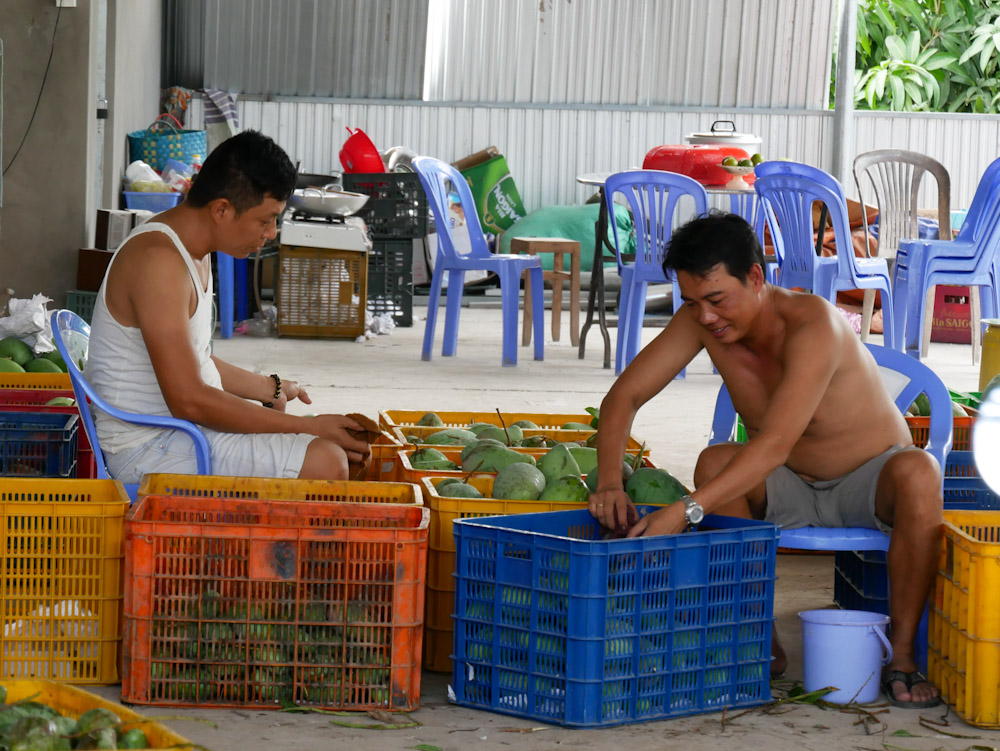
3. French cathedral
Cu Lao Gieng was built by sometime between 1879 and 1889 by a French priest who had the materials brought in all the way from France.
There’s also a possibility it was built even earlier, making it potentially the oldest cathedral in southern Vietnam.
On my brief visit it seems the whole community has come out to help with the elaborate nativity scenes.
Getting to the Cu Lao Gieng cathedral
If you’re on a touring route heading east, it may be easier to pop in here along the way. Otherwise the cathedral is an easy trip by bicycle or motorbike taxi from Happy Homestay.
